Automated transcript
In this event of this Swiss Service Design Network, we speak with Marc Fonteijn host of the Service Design show and creator of circle about the future of in-house Service Design.
We covered questions, like:
How did in-house Service Design evolve in the last three years?
What are possible scenarios for the future of Service Design done in-house?
We also get very practical with
Pieces of advice for organizations that want to set up and grow their in-house Service Design team.
Thanks to Marc for this lovely conversation.
We are here to speak about future of in house service design. And why I wanted to speak with you about this is because you created a thing that is called Circle.
Maybe we start our conversation there. Can you shed a light on what is this circle thing?
## What is Circle?
One way I like to explain it is that it's a community for service design professionals who work within large organizations or within an organization, an in house team.
And the goal of this community is To connect people to help each other grow and to push the boundaries of our practice. You can see it as a clubhouse for in house service designers, like a place where you can get together. I sent a message today to my group and saying it's maybe a place where we can laugh, we can cry, we can celebrate victories.
We can learn from our failures. Yeah. And in the end, I think when you meet the people who are also here, some of them I feel that it's becoming like a team of. People, professionals that you wish you had around you each and every day in your work. That's so many ways to explain the circle, but I hope this sort of gives a more holistic perspective.
And I'm happy to dive into into this deeper if needed.
And, I'm always interested in the origin stories, what's the pain, because usually it's always starts sometimes with a big pain, something, that has to be solved, or just some. Extremely fun and weird thing that all got it started.
What's the origin story of Circle?
## What's the origin story of circle?
There is actually a very fun and interesting origin story. So it all started on a Friday afternoon here outside in my garden where I was getting ready to have a weekend ready for beers. And then I got off the last call of the week with a friend of mine who is an in house service designer.
This is roughly three years ago, I think, May 2000, just before COVID actually. So roughly two years ago three years ago. And what I noticed in that conversation was... That he mentioned that he would love to connect with other people who are doing service design within large organizations. And I was like, hold on, this is like the 20th time I'm hearing this.
Why aren't these people connected? Why isn't there a platform for them? So that same Friday afternoon, I hung up and it was like, I think it was 4 PM. I was, I said to myself, I need to. To get the ball rolling. I need to do it now. Otherwise, Monday will come and I will have a million other things on my mind.
I opened up my email program. I wrote a very short message and the message said we are having our first And what's called the campfire, we are having our first campfire session, I don't know, in two months time. Let me know if you want to be part of it. So rather than saying we might start a community or we are thinking about this.
I was like, no let's plant the flag. Let's set a date. And if nobody shows up we'll cancel it. But yeah that Friday afternoon the circle was born and it was really emerged out of, you mentioned a pain, but it's a pain. It's the pain is, I think people want to connect and they feel sometimes lonely being in service design.
It's tough work. And just providing like the campfire, like providing a campfire where these people could meet, have fun and have good. Conversations with each other and that was three years ago and we've had a lot of iterations and things emerge. We are prototyping always with the format.
So it's definitely not the same as it was three years ago, but that's
how it started. Lovely. I love how prototyping was also really in the start, with this thing where you say, Hey. This is starting, who joins which is a very service designer y way to start a community instead of, oh, should we do it?
No let's do a prototype and see what happens. Love it. And
the community was there. It just had to be announced. That's the thing.
Indeed. It needed a... a place
somewhere. A needed place. Yeah.
And so it's three years that you're doing this. And you're not an in house service designer yourself, which makes me which I think gives you a a very interesting perspective because you're also the show of the service design.
The host of the Service Design Show, where you speak a lot with maybe more design leaders in big organizations. Now you're seeing and observing what happens in house. And so what's your take on the evolution? What has changed from, service design in house maybe three years ago?
And now, is there a change? Is it all the same?
## The evolution of in house Service Design
You're absolutely right that I'm not an in house service designer. I've never been one. I ran a studio, an agency for 12 years. And then I transitioned into the YouTube and the podcasting and the community hosting space. And from day one, I was very happy to be in that position where I could ask the stupid questions.
I have no clue what it's like to do in house service guy, there are people who actually have to go through the tough work and I'm just sitting there outside. But I think that gave me an advantage because people are not looking up to me, I hope, as the expert, to have all the... Questions have all the answers.
I think this helps to make sure that the conversation is between the members. But that wasn't your question. Your question was, what has changed? And I was thinking and reflecting about this question. And I think a lot has changed in the last three years. But at the same time, Not that much what I'm seeing is that we have gone from no interest in doing in house service design to a very significant interest in doing in house service design.
Three years ago, we already have some people who are dabbing into in house teams and starting it up. But today I would say it's almost... A no brainer for organizations to start looking into why should we have an in house service design team, or there is a realization, hey, I think we're also delivering services.
Maybe we need some people there. Awareness is growing. I think it's yeah, awareness. I think that's the biggest change.
## Where is Service Design more mature?
I'm from Switzerland where service design isn't maybe like the most mature thing yet. I see strangely enough, I've noticed the same thing where previously three years ago, it was Nearly no job posts existing with the term service designer.
And now you see job posts for banks, insurances, where they start to get service designers in. But I'm quite curious, which are these countries where you see a bit of a higher maturity level?
Yeah, I have to laugh at this question because everybody I speak to feels that the maturity is higher somewhere else. And in reality, it's not it's not really country specific, and it has to do with people, it has to do with organizations. I haven't at least found maturity to be linked to a specific country, even though people hope that's the case I haven't found it.
Interesting. So there is a bit of of the greener grass on the other side syndrome where you just look at the other side and you don't realize that there is grass on your feet.
Absolutely. And I think it's fair to say that, for instance, a country like the Netherlands, which is smaller, maybe has a more connected community, like maybe there's more academic interest in service design, but I can say that most Companies doing service design in the Netherlands are just as, for lack of a better word, immature or starting out their journey as companies in Spain or Mexico or Australia.
Like we're really just starting out, let's be honest, like there is a handful of organizations that have a, that has a significant design maturity and the rest of us are all just trying to figure it out.
Which the optimist in me, sees as. Oh, there is still room for us to shape how we want this thing to go somewhere.
Oh, absolutely. And we have to if we don't, somebody else will, and it might not turn out the way we hope it will, it should.
And so this brings me to, to one thing. So we're speaking about the evolution and you teased something which. Which was interesting to me, which was this, maybe in house service design might be the end of the service design.
Can you elaborate on that?
## The death of the service designer term
Sure. So for the people who have missed it, I posted something on LinkedIn, something clickbaity,
The start of an in house service design team is the end of the service design. And this is something that has been on my mind for at least two years. I really feel that we have to get rid of the term service designer. And this might be a shock to some, but I think it has served its purpose, but now it's just causing.
And realistic expectations and putting a lot of weight and pressure on us who actually have to do it. What I mean with that is if you have a service design team, it's much more inviting for people from other disciplines to participate in it as well. Even if they might not see them as a service designer, and I think that's a much healthier approach to service design.
The way I'm referencing to people formerly known as service designers I shifted towards using the term service design professionals. The same way we speak, for instance, about Medical professionals or financial professionals it's, it might seem like a nuance, but I think we need to shift our language and language is super important.
You still can be a service designer, but if we call our service design professionals, it creates more space and we can. Find specialization in there and we open up the opportunity to talk about a team rather than a single person. Because, sorry for my ramble, Daniele, but just to finish this off, the problem with the term the service designer is that it's just too big, too encompassing for one person carry all the burden.
So it might be helpful in the beginning when you're recruiting and you're trying to hire people to look for service designers, it's just easier to find people that way. But then you really quickly, I think, need to start redefining roles and rethinking that and thinking about the team rather than a person.
And this term might be misleading sometimes, this idea that one person can do it all, it's Oh no, definitely not. It's a team effort. And putting also this image of, God like figure of someone who understands what it is and who does it.
Most of the time, service designers or service design practitioners service design professionals, their work is not so much to know stuff, but to facilitate the work and facilitate the collaboration. And so it's. It's an interesting take to say once you arrive at the stage where you have a team, this team will not be made of service designers.
You will have someone who is a service design professional focused on research, another one who's maybe a great workshop facilitator, and then you have a team which is much more diverse and complete.
That's how, that's my perspective and there's a big asterisk and caveat and I hope people will disagree with me or have a different perspective, but this is how I hope our field and practice will start evolving.
So, let me disagree with you because I'd love to disagree with you on this. I think it's true. But not for small organizations. This is something I've been talking with with someone that we will have as a guest which was called Emmanuel Fragner, and who's thinking about this idea of having, a service designer working, for example, in a tiny hotel.
And he's working 20% there, and then, this guy, in a hotel, you don't need a service design team in one hotel, but you need someone who, can facilitate a few things, can also prototype a few things make stuff happen. In that case, I think, they're the term service designer, might be very good and in fact, very inspiring because it shows, hey, you can do that as a small job in a company, you can be that person, but where then the term maybe services and professional comes is when you say, hey, this is something that we do.
In house, in a big organization, and obviously it will be a team of 5, 10, 20 people. And so that's maybe where I would disagree with you, because I have this dream, which is not yet true in Switzerland, but I'm sure it will become, which is that It's just like a professional, like another, like an any other, where you could, you can have a secretary part-time working for a hotel.
You can have a cleaning person working part-time in a hotel. And why not have a service designer working part-time in a hotel? That's, that will be something interesting to me.
Sure.. So now we have a bit of an understanding, okay of the evolution and we teased it, this event with the question. What's the future? So where, instead of saying what is the future, the one that we are sure that we will get to, which I'm sure we will take very wrongly let's imagine could be three futures that you see coming to life in the future for In house service design teams.
Do you have already things that you see, maybe things that you've noticed in the Circle community that are growing? And
## What's the future of in house Service Design?
we actually had a session on this topic quite recently inside the Circle about the future of service design. And one of the questions was that the term service designer is, if we look at the salary report we do each year, we're seeing that the term service designer is declining, but.
There, there is a hope about the future for me, and there's my expectation of what's probably going to happen one thing that I'm I hope will start emerging are, again, I'm looking for the right words here, but let's say standards and standardization Guidelines. And I see that it's right now, in house service design is still a little bit of a a positive word is organic.
A different word would be maybe the Wild West. Everybody is trying to hack their way in the system. Where do we belong? Where should service designers be placed? Who do we report? How do we measure success? Like everybody, everybody is trying to figure this stuff out. So I hope we will have documentation.
People will start sharing. People will create. Templates not as a way to be rigid and strict and say, this is the way to go, but to make sure that we're building a staircase, that we have something to step on to and grow the maturity of our practice rather than having to try to figure everything out.
At the same time in each and every place. So one future I see is that we have more defined standards. A bit boring, right? It's a bit of a boring future.
We always need one boring future and maybe one very crazy. So if we try to formulate it, so we have the boring one. Which indeed is one which is already starting.
There, there are now ISO definitions for service design work that have been drafted. So this is stuff that exists in the world of government service design. There are standards that are created and that are developed. But now let's go maybe on the completely other side.
What will be A crazy scenario of in house service design in the future that you feel this might be possible.
I don't know. That's a tough question and I will let it marinate for a second in my mind. I will give you a more exciting development that I'm actually seeing already happening.
And maybe some of the Circle members who are here as well can comment on this in the chat. But one thing that excites me a lot is. I'm seeing people from completely different backgrounds and disciplines who maybe already have 10, 15, 20 years of work experience now stepping into the service design space.
And I find it Fascinating. I love it. And I'm seeing that they are really good at it. So I won't call out people by name unless they are here in the chat and want to comment on that. But we have a Circle member who has a background in hospitality. He worked in hotels and kitchens. He knows how to deliver services, what it actually looks like to deliver a service.
And then he stumbled upon Service Design and ran away with it. He's he's nailing it. I know a person who has been in classical music as a background, orchestra, speaking about orchestration, right? Working with orchestras, he's getting into, he's into service design, like these people get it.
And I find it so fascinating and I hope and it would be surprise, it would surprise me if that, if it won't happen more, we'll be seeing people without a traditional service design, educational background, stepping in into service design roles. This gives us our
second scenario, which will be on one side, we have standardization.
And I'm that's really helpful. Sounds boring, but extremely helpful. And on the other side, we have this idea that professionals who come with a good background transition to the world of service design and bring all of that together. That will be a second scenario
yeah. Yeah. And it's happening.
It's already happening. Okay.
And this gives me, it's it's always fascinating these moments. I think as you might have this sensation too where you're, we're seeing literally the change of the field of service design. And it's quite funny to, to see how from year to year, Oh, this wasn't true.
a few years ago. And now it's true. Sometimes I feel old when I've noticed this kind of stuff, I feel like, oh, this is stuff that I noticed changes. But at the same time it's something that is very motivating to see that that it's growing in a positive way. And this will be bring me to, okay, we, we are going to a few positive futures where let's say in house service design is something that is done more and more.
What are your advice? Your pieces of advice for companies who either wants to build a team of service design professionals or they say, Hey, we have a team, but we want to make it stronger. What are a few learnings that you can share? Because you have basically a team of service profession, service design professionals that you're working with.
So maybe do you have a few takeaways on how to create this continuous learning and how to make that happen? Sure. So
## Advice for starting an in house Service Design team
If you are starting a service design team, or you're planning to build service design capabilities, I would say rule number one is don't let these people burn out. That's rule number one.
I see this happening way too often and it's such a shame. It's real lives and people get burned out because the organization doesn't know how to utilize these talented individuals. So how to prevent burnout for service design professionals provide tons of support. Growth opportunities make sure there's mentorship, make sure there's guidance, make sure that they're, that they are not isolated.
Because otherwise in a year time, two years time max the whole thing will collapse and everybody will be disappointed. So that, if I would have to give one tip that would be I have more, but that would be definitely very high up on the list.
And so what are the other tips that you will share?
Yeah it's funny that you mentioned like having a part time service designer in an organization. I like that idea. If the organization is bigger, my recommendation would always be never hire a single service designer. Always hire a team, and a team can already be two or three people and if this is your first service design hire, do not hire a junior person.
Sorry for all, everybody here who is trying to get into their first service design position in house, especially if you're the first one there will be so much pressure, responsibilities people pulling on you, wanting things it's really it's just really tough. I don't wanna, I don't wanna discourage anyone here, but just to set the expectations that it requires so many other skills, disciplines, life experience to actually succeed.
If you're if you're the first service designer in house that it's better as a, for instance, as a junior to step into something which is already established, has some internal credibility. So again, coming back to your point, start with a team, at least hire two people. If you have the.
capability. I think that increases the likelihood of success exponentially. And
what's lovely now is if with part time, you could say, Hey, instead of having one service designer at a hundred percent, I could get a small team of two, three people working part time and there is already a sense of a team there.
At the, at nearly the same costs than having just one.
The thing that I would add here is two things that I'm going to add here. One is think about the growth opportunities that you'll be able to provide for the people that you're hiring. Because some people enjoy in doing service design work indefinitely, but people want to grow. People want to. Whether it's developing their personal identity or growing their professional skills, they want to grow.
And I'm seeing that there's just, it's just companies haven't thought about or have no clue how to facilitate growth for service design professionals. And that becomes a big frustration. People leave because of that. So thinking about growth paths and how careers develop, I would do that at the start before hiring somebody.
Nice. Thanks. Thanks. So you said you have a few other ones, I just wanted to take maybe one last one from your mind. Okay. And then,
yeah. Yeah the last one I'm picking, I'm looking at my list here, which I prepared during a walk in nature and this one is going to sound so obvious again, and everybody's going to nod, but when you're building this team or hiring this person, make sure that they have a very clear mandate.
Way too often, with all the good intentions, service designers are hired into positions just because... Service design is on the rise at this moment. And there is no there's no clear mandate. There is no clear, not a clear scope. We don't know what success looks like. So eventually you drown you're just lost.
What am I doing here? Why am I here? And people start seeing that the organization is actually working against them to do that job that they were hired to do. So I know as banal and obvious, this. Might sound do you actually need a service designer? And if so, how, what is their responsibility?
How will they know that they are successful? How will you measure that? It's not in place too often.
Yeah. And it's often these quite simple questions, which. have the most complicated answers and which need the most work. And it's not the simple steps, but these simple questions often are not just related to services.
And I think basically, this is something that I always come back, when people ask me a question specific to service design, I usually tell them just reframe the question without the word service design. And you'll find a lot of good knowledge about that, like, how can I create a team?
Look at this literature because there are, it's something that has been done for ages, and there is a good documentation on that. And you can find experts who can guide you. And there are processes on how to build teams on how to make that happen. Obviously not for service design specifically and that you can still get that knowledge by joining something like Circle or being in a service design network and having exchange with other professionals.
But, sometimes just being able to go back to the basics and realizing that it's not all new. This stuff has been happening for years, decades, centuries, and we can go and look and learn from our elders if we can say it like that. Yeah. Okay. I see we have a lot of people today with a lot of questions.
So I'd love to just to go directly now with the questions of the people. And so basically what we have already a few questions in the chat. So let's see if we can maybe select one. If you see one, Mark, just... Yeah,
I saw that there is a lot of activity in the chat. So I haven't been monitoring it very closely.
Now, maybe Daniele, in the meantime, while you are scrolling to the chat and trying to find some answers would it be interesting if I give a sneak peek inside circle and show people what it actually is? Indeed, that will
be perfect.
## A preview of Circle, the in house Service Design community
What you need to know about our community is that we practice slow communication.
That's right, Brian. Just, we believe in slow communication, which means we do not have a slack channel. Our communication happens mostly in online meetings. We have two meetings. Throughout the month, gatherings one is at the end of the month and the other is midway, and we have a food theme going on because we have a water cooler and we have a dinner table, and I'm going to give you a sneak peek into our dinner table conversations and then we'll And if we have time, I can also show you around in the water cooler.
But let me pick two sessions. This was a quite recent one, and I won't go into too specific details because we try to keep things confidential and make sure that this is a safe space. But we recently had a session with where Jeannie was the host of our dinner table, and we discussed how do you actually find the job for service design and both ways.
How do you actually land a service design role? And how do you know if a project is suitable for a service design approach? So what we do in our dinner table sessions is the role of the host is to introduce the topic to ask Some questions about how is, what is your perspective on finding the right job?
Why is it important to me? So we have a common starting point and then we really quickly, and again, I cannot zoom into too much detail here, but we try to have. Conversations with each other based on a prompt. And we do these conversations in very small groups, three to four people. So that you actually can ask questions and have a dialogue with somebody who's also an in house service designer and ask, Oh, that's interesting.
How do you actually do that? So I see these dinner table sessions as. Again, imagining sitting at a table, 12 smart people around you, you put in a topic that everybody is excited about, and you just go for two hours. And after two hours, the dinner is done. We end up the meeting and everybody goes back to to work and to family.
And just to show you that this was one example here we talked about employee experience. So the topics I would say are almost all over the place, which is a good thing because you often learn about the things you didn't even know you wanted to learn about. So this is not like signing up for I'll stop sharing now.
This is not like signing up for a course or training. This is really about. Serendipitous learning. I'm bumping into you, Daniele, and give us five minutes and we'll have an interesting conversation. And that's the space that we also try to facilitate. Okay. Was that enough time for you?
That's perfect.
Thank you so much. And I think, there is something that can, this is something that can be also replicated within teams, this way of working to say, Hey, we sometimes just need time to get together and also not just get together as the service design team, but also bring a few people, stakeholders, other people in and say, Hey, this is our tradition.
We do it like that. And. We have this conversation. So we have this dinner table where we exchange on topics. And I think this is something where in order to create the service design team that has a real impact on their organization, that could be something that you can replicate within your organization.
So let's go for it. Yeah. Yeah.
## How to set the scope of an in house Service Design team
Let's go with the first question, which is you said It's important to give a scope, a goal for an in house service design team. How do you do that? How do you find that scope?
How do you find that scope? Again, this is probably a good question to ask the people who are really in house service designers.
But from what I've been seeing and hearing, the scope that works is usually initially when people are part of a smaller, embedded... Team that's working on a very specific area of the organization. So with service design, you might imagine services are big, spend multiple departments, like we're going to work holistically.
Initially, I'm seeing that people are having the most success when they are just. focused on maybe even a small section of the service. So we're going to improve the onboarding experience for people who sign up to our car rental service. Again, for a service designer that might feel, Oh man that's so narrow, but it gives you the best shot at actually creating tangible success, creating tangible outcomes.
And that's the thing that helps you to propel and make things bigger. So what is the piece of services? that you're actually going to work on.
This advice of starting small is something that comes back always and always, just saying, Hey, prove that it works.
And the best way to prove that it works is to get some results within the first few months and to get there. Why do
you think it's so hard? Why do you think it's still so hard, or at least it seems so hard to start small?
Because I think there is a wrong philosophy of, being this end to end experience, cohesive masterpiece element, that we are somewhere, sometimes taught, as saying, Hey, usually organizations are built in tiny silos, blah, blah, blah.
Service Design is the orchestra of all the things, which is. A good philosophical element, but when you start, it's definitely not that. Then it's just, getting the flutes in, who do a bit of music and proving that it's lovely music. It could be nice to have now another instrument in, and then slowly you bring a few more instruments.
But it's very hard because we have, I would assume, this philosophical thing where we want to get to the end right now.
Yeah, adding to that I think you're absolutely spot on here. We as a service design community, I think have a curse that we need to be very aware of. And the curse is that we see potential, we see what it could be like.
We see all the opportunities, like we already see the end result, and then we need to go back and work. On this very small tiny piece, you have to have a lot of patience you have to recognize. Success in a different way. If your definition of success is that big, holistic service transformation, organizational transformation thing that's going to be that's going to take a while.
I think you have to recognize success on a daily, on a weekly basis. Otherwise, yeah it's going to be a tough journey. Let's jump to the
next question.
## Product Management versus Service Design
We have Mark who says. What do you think the future of product is in organization and someone else adds to that to add, how can product management and service design coexist in the most helpful and collaborative way?
Yeah, to be honest, I know shit about product management. I don't know anything about product management, but I'm going to go off on a small rent here as well. I am so confused by the word product in organizations. I just don't get it. It's not a product, people. It's a service. And I know that product is already so embedded in the language, but I don't think it's helpful.
We're not creating products. I would love to do a service design show episodes or multiple on the intersection between product management and service design. I think that would be very interesting. I currently don't have an answer. Two, that other than that I'm just very confused by the word product within service organizations.
No worries. But usually, when people ask what's the intersection, the first answer is, Speak with them. And usually from there you find what's the intersection it's and then realize that a lot of what you do is the same. You just use different language. And so realize what's the different parts where you're really doing different work.
Yes. Yeah.
Yeah. Yeah. Yeah. Absolutely. And it's like the last thing we should try to do is to create two camps, like a product and a service camp. I don't think that's helpful. I think there are so many, there probably are so many parallels. It's just a different vocabulary. And I think it's thinking, getting people to think in services rather than products will be beneficial in the end, but let's start with our commonalities and our common ground and our similarities because we're probably trying to achieve the same
outcome.
So we had another question, which is, A very good for the burnout question, which is
## How to stay motivated as an in house service design professional?
how do you find ways to pat yourself on the back when there is no tangible KPI that you can show or take?
Yeah, I think we can come back to support structures there. I think moral support is so underrated. And mental being is so underrated in our field for sure, maybe in other fields as well.
But build a support structure around you. It can be coaching, it can be mentorship, it can be communities, it can be... A training program, courses, like there are so many ways, friends, bears but you can build that. And I think it's very healthy to put that in place so that you don't need to look at.
Numbers or tangible KPIs that you just have people around you who help you to be grounded and where you can check in and see that you're not going insane and that you're still on the right track. Was that an answer to
the question, Daniele? Yeah, yes, indeed. Let me build on that. As I myself, a service design professional, not with that name with a big organization and The one thing that I realized is the support part is also a big part on you, which is important to realize.
And which means it's like mental health, it's something that you can practice and that you can also systematize. For example, one way to do it, which is very interesting for helping the organization also is keep a. A Word document, a Notion document, whatever you like, and put in it, every time you do something that has a number attached to it, something, an achievement that you can say, oh just finished five interviews, write down five interviews done in that thing.
Whenever you work with a colleague and he's doing something great, put that in a list of, people to congratulate. And then over a month or two months or three months you'll have a list of, okay, these are achievements. These are people that I have made and these are people that we should congratulate and then share that with the team and your boss.
Because then what happens is that you make visible the things that we don't think of measuring. Because there are so many things that we will never think of measuring but that are very interesting. And then what you do is you also create this lovely thing which is... You're suggesting, hey, Mark did an awesome job on that, but, Mark is shy and Mark will never put himself on the stage and he deserves a prize.
These are very simple things that you can do, even if there is no system, no peer review thing, these kinds of tiny things can really help. And also, even if you don't send it, you can go back in it and say, Oh wow, fuck this month. I've been busy. I've been doing things. Oh, I'm grateful, because all of these peoples have helped me, which can be really helpful.
I
I love it and I want to add one thing to it. I agree with you that sending it out it's not always necessary, but I do think if you have the opportunity to turn this into sort of a small mailing list thing that helps tremendously. And again, a few people here can comment to that. I started sending out a monthly email to the circle members and one of the section is a win of the month.
Where I invite everybody. All the members to share a win of the month. I think it does two things. One is it helps you to reflect. So what was my win of the month? Even if you don't share it with me and I share it out with the rest of the community, I hope it helps you to reflect maybe there was a win.
And the other thing that it does is by sharing what others have done, you start to recognize, all right I might be able to frame success. In this way, I didn't even realize that this could be something that I could celebrate as a win. So yes, just learning from you and adding to what you said.
And I know you're also a practitioner of gratitude journals and this kind of stuff. And I'm quite amazed how we often keep this stuff, for personal and don't make it. for work, and especially in big organizations where you might feel alone from time to time, it's a good practice.
And we have a lot that we can steal from mindfulness and all these positive psychology aspects. I'll go with the last question, which is the following one from Anna.
## How to prepare Service Design students to work in house?
What advice would you give to teachers that teach service design at the university? And I will add to that, to prepare them for being great service design professionals in house.
That's a fun question. Again, I'm going to make so many assumptions here because I'm not a teacher and I have to be I know my place in this world, but again, basing my answer off the things that I've been hearing not just in the circle, but also through all these services, actual interviews that I've done over the years I would send.
My students to do an internship, but a very special one. Again, I'm coming back to the area of what it means to deliver a service. I would send my students to actually go out and intern with an organization that is. Delivering very tangible services. Now you can say every organization delivers a service, but maybe go to a restaurant where the front stage and backstage is just there.
It's there isn't a better place to to experience the front stage and backstage. I go in. And that's the place where you where I hope things really start to click. Okay. So it's not just like this beautiful customer journey map or this service blueprint or this persona. No, this is what service delivery actually looks like.
And I think that's missing from a lot of experience that students. Does that make sense Daniele?
Indeed. So the trying part the traineeship part is definitely one that we often miss. Being involved in the universities that teach service design, it's often something that comes Much later and having that being in the tangible aspect is definitely something that can be extremely useful because then you see how it really is in some way and you've done that.
Yeah. Yeah.
So go deliver a service, like rather than trying to design the service. Go and do the service first, do that for a while, go be part of the dumpster truck, the city cleaning department, do that. And then after three months. Then I think you have some knowledge to to start thinking about designing it, redesigning it, improving it.
And one other one, which is a typical one, but this one works so well, is go work in a hotline. Hotline jobs, easy to find but it's where you see, how people really interact with organizations. And that's where also you see how organizations. Standardized stuff make also sometimes the work of workers hard, and then you will realize, ah, okay, when I create a service and I make it happen in that way, that's how the guy will have to deliver it, and I remember how painful it was to have to speak with people and say, yeah, I know our reimbursement process sucks just give me two months this kind of stuff.
It really helps. I've been there myself, and I have to say, it was an eye opening moment where you realize you've Oh, that's what happens. Okay. That's definitely something with.
I I can absolutely support that recommendation.
And it's one recommendation that is done to come back, not just for people who are studying, many organizations do that now that they say each person on a team of the organization should at least do support.
This is a very smart way because it's always anyone, the secretary, the CEO, the janitor, you can take everyone and get them in front of the end users, if they are, obviously they are always end users. Sometimes they are more businessy than than customers, but, get them in front of people who are struggling with the service.
Because then you realize, ah, okay that's who we are trying to help. But also then you see also the impact it has because people usually tell stories like, Oh, my mom is really sick and this is happening and I need you to help me fix that. And then you see, oh, wow, I'm a janitor. I'm helping with that.
Oh that's also cool. I didn't realize.
Yeah. Yeah. Then it becomes real. Even more real. Yeah.
## Try out Circle, the in house Service Design community
Perfect. So Mark, anything that you would like to add as maybe a summary or a call to action?
Yeah. Yeah. I I forgot that throughout this whole chat, we've been talking about in our service design and this community called Circle.
And I'm going it's not a pitch, but if you got inspired by this and you're thinking this might be an interesting tribe and community for me, alliance, I'm putting in the link in the chat right now where you can learn more about this. If it's not relevant for you Send it to somebody who you think might need some I call it support in actually combating or fighting against status quo within our organizations, because I think that's our biggest enemy.
So I hope this message reaches the right people and that there is... You're not alone. There are so many other inspiring, amazing people who are on the same journey and are so willing to help. Yeah spread the message. And I hope that we really, all of us can contribute to maturing our practice sooner with less people burning out and more people enjoying the work that we do.
## Summary
Thank you so much, Marc. I'll do the final summary, which is this one. I will take a few elements that I've gathered throughout our conversation. It's lovely to see that we are not yet at the high stage of service design, but we are at the moment where, it's taking some traction. And this gives us a chance and a responsibility as a community.
This is my very pastoral work, I'm preaching here. This gives us a chance to make it happen in a direction that we feel is the right direction. And let's not go in the direction where we make great services happen, but It's at the cost of many people's mental health. I think that's something that I will take here and that I would like to put again on the stage to say there is a calm lovely way to do the work of service design.
And if we are not able to do it, it's that we might have a big problem in the way we are designing our own work. And therefore look at what exists. Look at Circle, maybe copy it, try to internalize it, because I think there is a lot to learn there, join it, and Continue to try to be as lovely with your customers, with your stakeholders, and to be of service for people.
That's the call to action that I would like to give.
## Thank you notes
I want to take this moment to thank you for putting this up for our community, creating this space to have these conversations. So many people show interest. So I know that you're doing this from love. Your time is very precious and valuable with having a family and work around.
Thank you, Daniele, for setting this up.
Thanks to you, Marc. You're doing a lot for our community and I really appreciate that you're giving a lot for the community too, and also a big thank you to all of you who you.
Joint, shared question, showed interest. Thank you so much.
This transcript of the webinar was generated automatically, so it will contain errors and funny sentences.


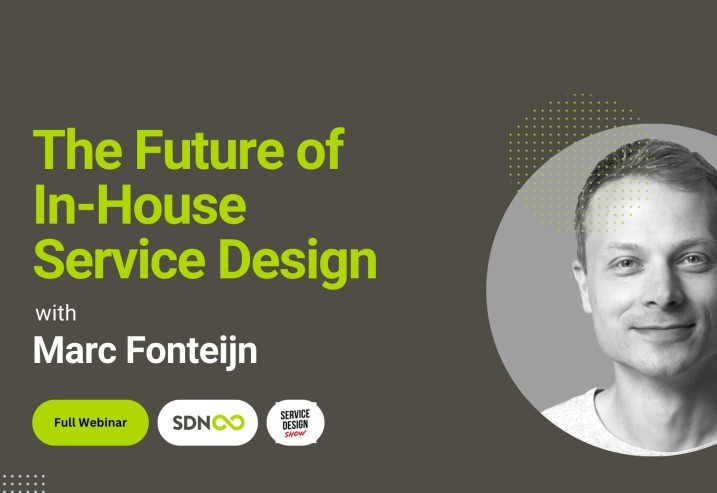
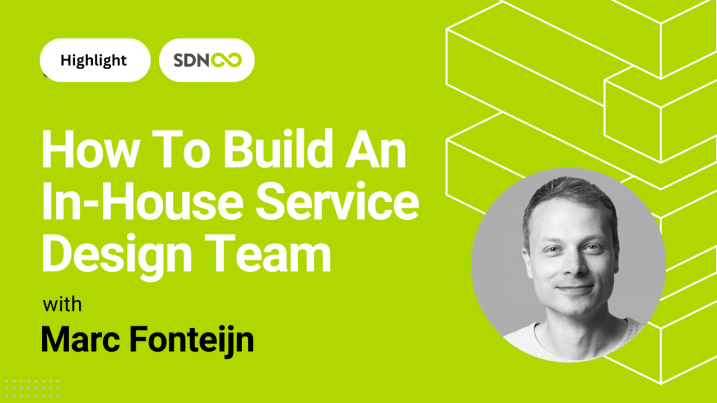
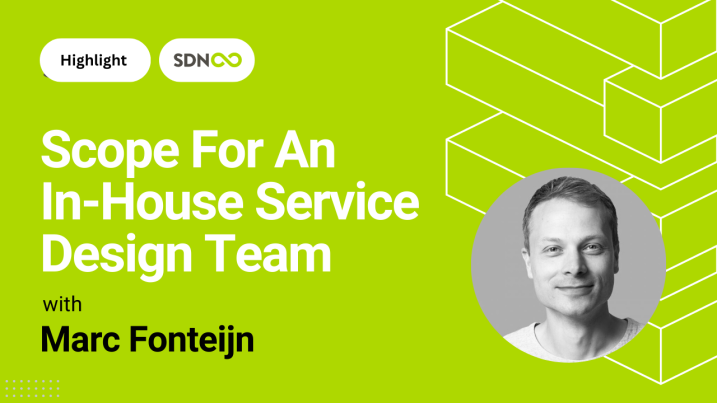
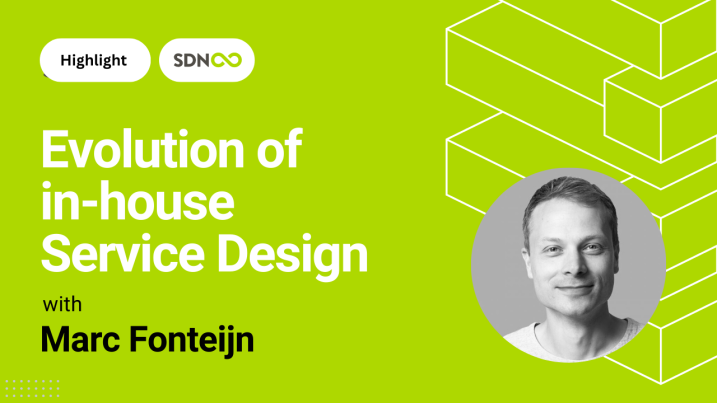
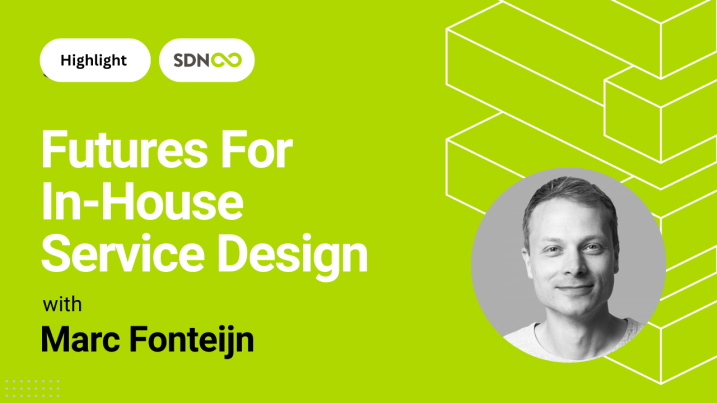
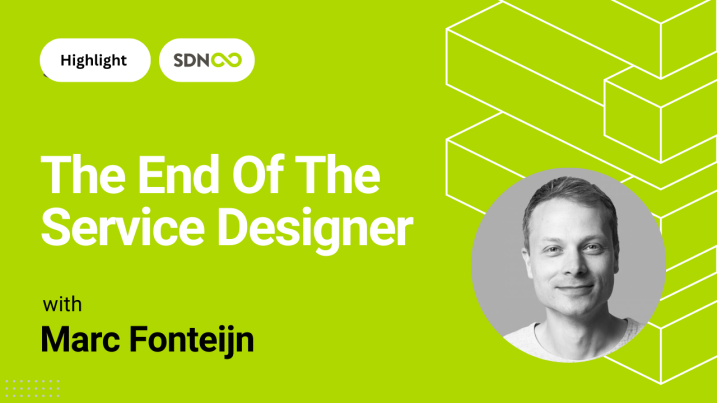

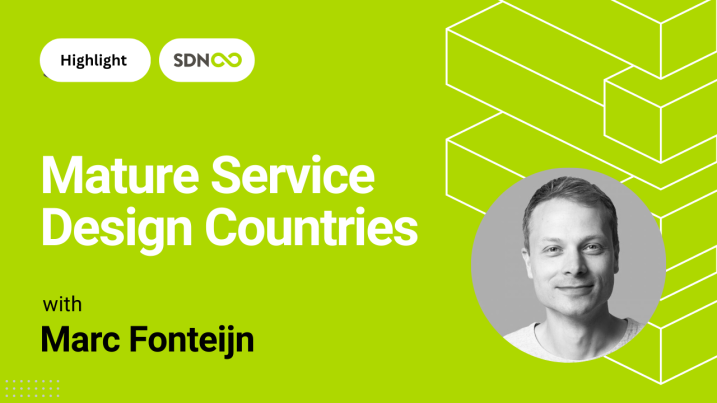


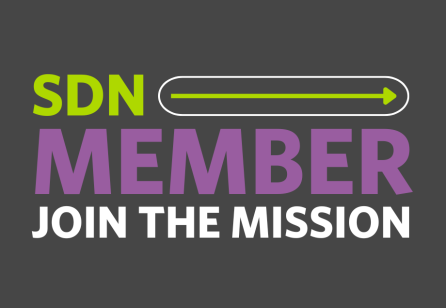


Share your thoughts
0 RepliesPlease login to comment